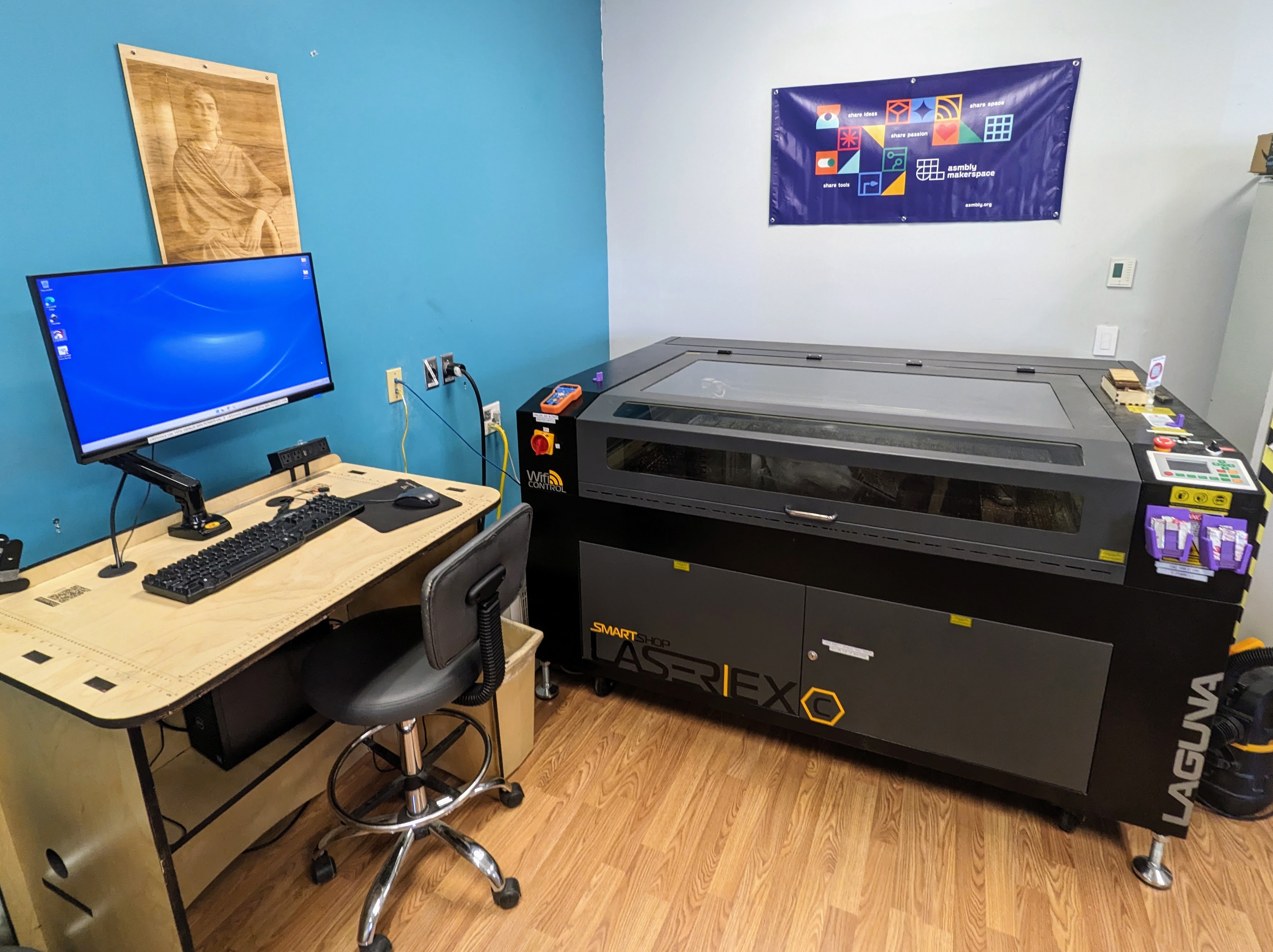Dorian
From Asmbly Wiki
Dorian is our Laguna EX-C 150W laser cutter. The bed size is 36" x 51" and it uses Lightburn software with a controller and interface similar to Tarkin. Dorian also has a rotary fixture, so you can use it to engrave round things like glassware.
As of 4/5/22, it is online and ready for member use.
![]() Members must complete the Big Lasers Class before using this tool
Members must complete the Big Lasers Class before using this tool
Common Issues and Troubleshooting
- Make sure that the laser is on. (Black knob on the right side) If the light doesn't turn on, twist the red knob. If someone used the e-stop to turn the machine off the red knob will pop up.
- Make sure that the chiller is on. You won't be able to cut if it's not on.
- Consider rebooting the PC before starting your project as this will clear the previous users settings and return you to a somewhat default state.
- Verify you're using the appropriate origin settings when sending files from Lightburn to the laser. If you frame your job and the laser moves somewhere you didn't expect it to, this might be your problem.
- If you're getting blurry, low power cuts or etches you may have forgotten to focus, or refocus.
Know Your Materials
Before even considering a job, make sure that your material is laser-safe by checking the Laser Cutter Materials page.
You may not know it, but the following are not permitted at asmbly:
- Lexan/Polycarbonate - Looks a lot like acrylic, but can damage the laser.
- Epoxy - A common material for woodshop projects, but not laser-safe.
- PVC - Releases toxic chlorine gas! (not to mention damages the machine)
- Material with Sticky Glue Backing - There are some materials advertised as laser safe that use a sticky glue backing, but this is not allowed at asmbly. The glue residue is worse than resin, and can't be removed without risking damage to the lens, requiring a lens replacement.
- Polystyrene and Polypropylene - These catch fire and make a terrible mess!
Example Checklist Before Starting a Job
- Consider rebooting the computer to restore default Lightburn settings. If a previous user changed a setting deep in a menu it could affect your job and it may be difficult to troubleshoot.
- Start by verifying the size of your artwork in Lightburn before moving on to anything else. There are situations where your files can import at the wrong size depending on file type and the program they were exported from.
- Focus the laser every time you put a new sheet of material in the laser.
- Verify your desired origin settings are selected
- It's a good idea to make sure your inner cuts are the top layers so they cut first.
- Use the Preview Window to check the run time of your job. Make sure the run time isn't longer than you expected or longer than your reservation.
- Make sure your material is secured firmly to the bed. Heavier materials may not need anything to secure them, but your material should be as flat and parallel to the bed as possible for best results. (Technically you want it parallel to the gantry, but the bed is the best reference we have)
- Make sure the head will not collide with your material or anything you're using to secure the material.
- When possible always do a small test cut/etch on a sample of the same material as you're using for your project. If you don't have the exact same material to spare, try to find a scrap of comparable density material with the same thickness.
- Always confirm your origin and frame the artwork before running the job. When you're satisfied, press send monitor
- You can press pause to stop your laser without ruining the job if you need to step away from the machine. (Never leave an active laser unattended!)
Maintenance
This tool is owned by Asmbly Makerspace for the use of its members. Please submit a problem report if maintenance is required.
